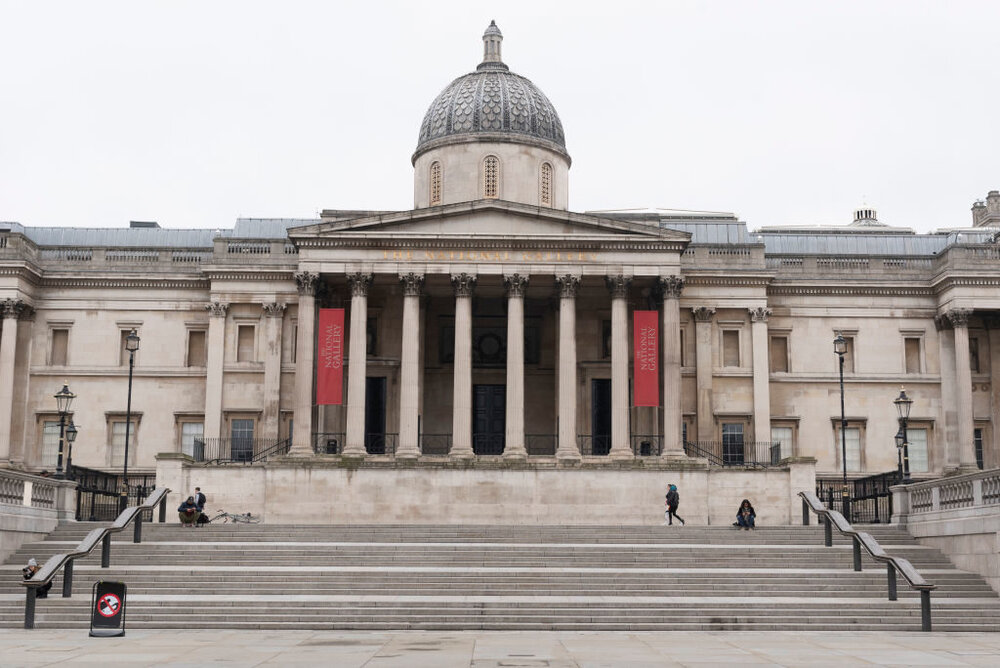London National Gallery is one of the largest art galleries of the British capital. There are more than two thousand masterpieces of Western European painting from the XII to the XX centuries in it, and all pictures in the exposition are located in chronological order.
The gallery was opened on April 9, 1839, but the date of its foundation is considered to be May 1824 – then was bought a collection of paintings by Angerstein, numbering 38 works. The gallery’s collection was enriched both by the government and by outside donors, such as George Beaumont.
Initially the gallery was located on Pall Mall Street, but the steady increase in the number of paintings demanded more space, and in 1831 construction began on a building designed by Wilkins. In 1838 the new gallery on the north side of Trafalgar Square was opened to the public.
Features
The National Gallery has a truly enormous number of masterpieces of art, it is impossible to see them all in one visit. So when you’re going to the exhibition, we advise you to identify the paintings (periods, works of specific painters) that you’d like to see first, and make a rough itinerary.
In addition to the collection of masterpieces of painting, the National Gallery is notable for several nice features. For example, in the Espresso Bar or The National Café you can relax and drink coffee, and in the souvenir shops and art stores you can buy souvenirs, books and copies of paintings exhibited in the gallery.
If you like, you can listen to audio lectures or view multimedia presentations about paintings and their authors in the Sainsbury’s Wing or in the already mentioned Espresso Bar.
Developing and adding to collections
The National Gallery’s collection of works is constantly expanding, both through contributions by individuals and charitable foundations. Several works by Dürer, Bermejo, Sera and Altdorfer have recently been added to the collection.
The gallery has many world-famous paintings on display, including Velázquez’ Venus with Mirror, Van Gogh’s Sunflowers, Titian’s The Holy Family and Rubens’ Landscape with the Castle of the Wall.
If you compare the collection of the National Gallery with the collections of other major galleries, such as the Louvre or the Prado, it does not seem very rich. But the fact that masterpieces of all European schools of painting since mid-13th century till early 20th century are collected in London gallery’s favor. Another reason to be proud is the extensive collection of works by Titian, from the earliest to the latest.
Naturally, the National Gallery has many works by the court painters of English kings – Antonis van Dyck and Hans Holbein. Van Dyck had a considerable influence on the development of painting in the country and, to a greater extent, on English portraiture.
The gallery has an extensive collection of works by Venetian artists such as Mantegna and Bellini. Italian masters are represented by paintings by Filippino Lippi and Antonio Pisanello. For the number of paintings by Spanish masters, the gallery certainly loses out to the Prado Gallery. But it is here that the largest collection of paintings by Velazquez outside of Spain is located.
Fans of Rembrandt will also have something to see – the gallery owns a rather large collection of his works, reflecting the entire life of the great painter. For example, on the canvas “Portrait of Saskia” we see the first wife of the artist, and on a modest work “Woman” – already his second wife Hendrickje Stoffels. Also in the collection is a suicide work by Rembrandt.
The great Rubens is no less widely represented – there are 24 canvases by this Dutch master in the collection. Most of the works in the gallery belong to the late period of Rubens’s work, when he had already achieved fame and began to allow himself to paint for his own pleasure.
In addition to those mentioned, the gallery has many works by German, French, and Flemish masters. The National Gallery successfully continues the work of its founders, giving us the opportunity to see masterpieces of world art live. And its convenient location in the heart of London makes it even more attractive to tourists.
